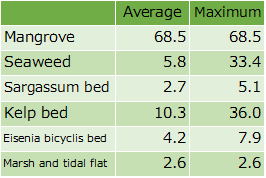ITOCHU Announces Commencement of a Mangrove Planting Project in Collaboration with Uken Village of Amami Oshima Island, a World Heritage Site
Also Viewing Creation of Japan's First CO2 Credit Through Mangrove Planting
August 18, 2021
ITOCHU Corporation (headquartered in Minato-ku, Tokyo; Keita Ishii, President & COO; hereinafter “ITOCHU”) announced today that ITOCHU has reached an agreement with Uken Village on Amami Oshima island to commence mangrove planting. ITOCHU advocates environmental conservation in its Basic Activity Guidelines on Social Contribution. This project will contribute to the conservation of biodiversity and also pursue the creation of Japan's first CO₂ credit through mangrove planting.
The Amami Oshima island was inscribed as a World Natural Heritage Site following a UNESCO World Heritage Committee meeting held this past July. Located on the west coast of Amami Oshima, Uken Village is striving to nurture and protect its abundant and irreplaceable natural environment, home to many different creatures, so that the next generation will always and proudly cherish it. As part of this effort, they plant mangroves by using the seedlings of Kandelia obovata (*1) that local children grow. Referred to as "the cradle of the sea," the mangrove forest provides aquatic creatures with a habitat. Moreover, leaves and fruits from the forest serve as the source of the creatures' energy and also contribute to the conservation of biodiversity. Creatures such as mud crabs and barred mudskippers inhabit the mangrove ecosystem of Amami Oshima.
Mangroves are known to absorb a large amount of CO2 per unit area as their densely growing rootlets constantly repeat a process of extending and dying and the fallen branches and leaves become peaty and accumulate, isolating high-density carbon in the soil. The kind of carbon that is isolated by a marine ecosystem like mangroves is referred to as blue carbon (*2) and is expected to be a new CO₂ sink. ITOCHU and Uken Village aim to obtain the J Blue Credit (*3) for the absorption of CO2 through the project, which will be Japan’s first mangrove-derived credit certification. J Blue Credit is issued by the Japan Blue Economy association, an organization approved by the Minister of Land, Infrastructure, Transport and Tourism. We also want to have the certification serve as a foothold for our efforts to expand blue carbon.
ITOCHU seeks to strengthen its contribution and commitment to SDGs and positions this as a basic policy of Brand-new Deal 2023, the company's medium-term management plan. This project will be developed to help execute the policy. Going forward, ITOCHU will step up its efforts to help achieve the SDGs.
|
*1) Kandelia obovata |
■Seedlings of Kandelia obovata |
|
*2) Blue carbon |
■Absorption coefficient (tons-CO2/ha/year) |
*3) J Blue Credit
This is a credit for the amount of CO2 absorption and is issued by Japan Blue Economy Association, an organization approved by the Minister of Land, Infrastructure, Transport and Tourism. https://www.blueeconomy.jp/
Companies and other credit buyers may use the purchase of the credit to offset GHG emissions that cannot be reduced solely by emissions reductions initiatives.

